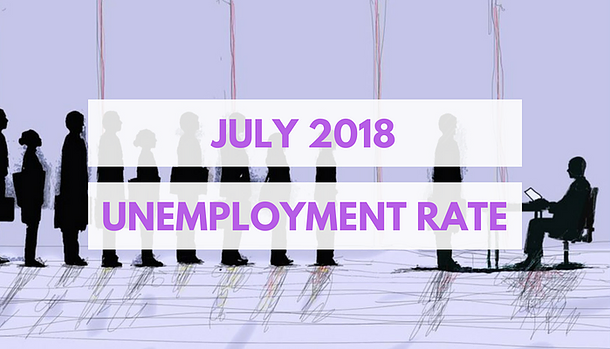The US unemployment rate fell to 3.9 percent in July 2018 from 4.0 percent in June, matching market expectations. The jobless rate touched an 18-year low of 3.8% in May. The number of unemployed persons declined by 284,000 to 6.3 million and employment was almost unchanged at 156.0 million.
Among the major worker groups, the unemployment rates for adult men (3.4 percent) and Whites (3.4 percent) declined in July. The jobless rates for adult women (3.7 percent), teenagers (13.1 percent), Blacks (6.6 percent), Asians (3.1 percent), and Hispanics (4.5 percent) showed little or no change over the month.

Among the unemployed, the number of re-entrants to the labor force decreased by 287,000 in July to 1.8 million, following an increase in June. (Re-entrants are persons who previously worked but were not in the labor force prior to beginning their job search.)
The number of long-term unemployed (those jobless for 27 weeks or more) was essentially unchanged at 1.4 million in July and accounted for 22.7 percent of the unemployed.
The labor force participation rate, at 62.9 percent in July, was unchanged over the month and over the year. The employment-population ratio, at 60.5 percent, was little changed in July but has increased by 0.3 percentage point over the year.
The number of persons employed part time for economic reasons (sometimes referred to as involuntary part-time workers) was little changed in July, at 4.6 million, but was down by 669,000 over the year. These individuals, who would have preferred full-time employment, were working part time because their hours had been reduced or they were unable to find full-time jobs.
In July, 1.5 million persons were marginally attached to the labor force, little different from a year earlier. (Data are not seasonally adjusted.) These individuals were not in the labor force, wanted and were available for work, and had looked for a job sometime in the prior 12 months. They were not counted as unemployed because they had not searched for work in the 4 weeks preceding the survey.












Leave A Comment